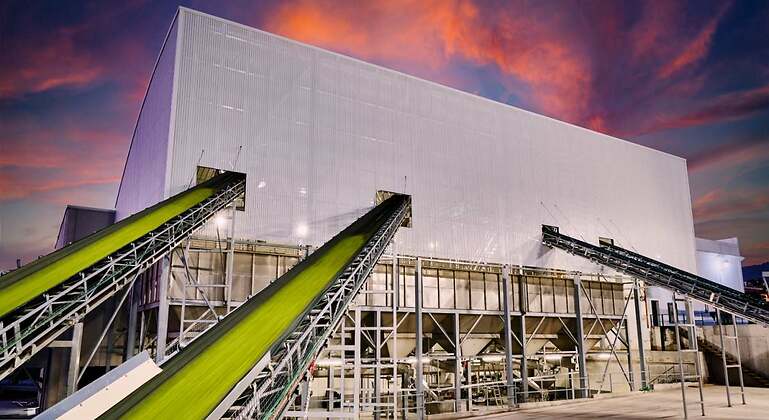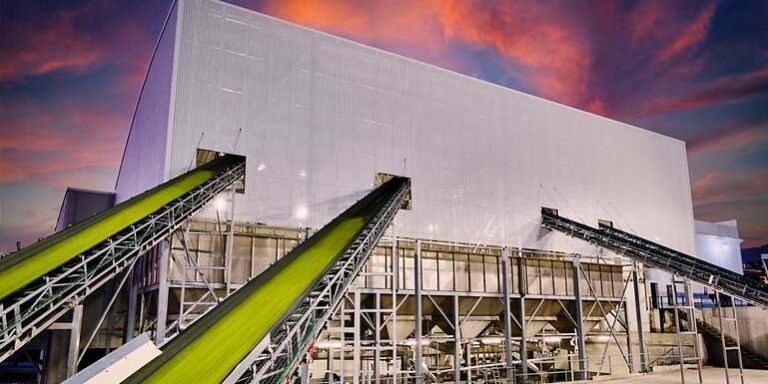In order to analyze modern olive growing, we must start in 1980, where the traditional olive grove covered 7.5 million hectares in 23 countries, mainly between parallels 35° and 45° north latitude. Today, olive growing has evolved with intensive and high-density olive groves, representing 22% and 6%, respectively, of the 2.5 million hectares of olive groves in the world. Furthermore, the hedge olive grove, which emerged in 1995, occupies almost 4% of the total olive grove area, adapting to climate changes and labor shortages.
Olive oil production has expanded to more than 66 countries, challenging the traditional idea that the olive tree ends where the Mediterranean ends. The evolution responds to climatic changes and the decrease in the rural population active in agriculture.
The hedge olive grove, with 450,000 hectares, has generated a new precision olive cultivation, optimizing resources and transforming olive tree culture. In unusual places like Saudi Arabia, Argentina and China, it has boosted global demand for olive oils, spawning innovative oil mills that surpass many producing nations.
These oil mills, with exceptional capacities, face logistical challenges due to the size of the farms and the short harvest season. The result is a new typology of oil mills, highlighting the importance of the field in agribusiness.

Below we show the opinion article published in el economist.es on February 17, 2024 by Mr. Juan Vilar Hernández , international olive oil analyst, strategic consultant, UJA professor and farmer, under the title:
Modern olive growing, a condition for your agroindustry
In 1980 there were around 7.5 million hectares planted with olive groves on the planet, mainly traditional, spread across 23 countries on the 5 continents, mostly rainfed, and between parallels 35° and 45° north latitude. , because in the southern hemisphere, although there were already some olive groves, it had not been developed as a relevant economic crop, although it subsequently developed between 35º and 41º south. Today, the phrase of the French poet George Duhamel “where the olive tree ends, the Mediterranean ends” has become outdated.
Gradually, the development of olive growing, with intensive olive groves, in the 1960s, began to displace traditional olive groves from the second half of the 1980s where the water supply allowed it, or to replace crops of different types, such as cereals, oilseeds, etc. Currently reaching 2.5 million hectares on the planet, 22% of the total current olive grove surface, with between 300 and 600 trees per hectare and with a range of mechanization greater than traditional.
In the same sense, during the 1980s another more advanced olive cultivation emerged, in this case, with a little more density, called high-density olive groves, with a number of plants that could range between 600 and 900 per hectare, much more mechanizable. In this case it is 6%.
In 1995 and with Finca Valonga as its origin, in Huesca, another type of olive growing emerged, the hedge olive grove, currently holding almost 4% of the total olive grove area in the world, which currently exceeds 11.6 million hectares. Making a comparative simile, the olive grove that covers the Planet represents an area similar to the surface of Andalusia or Portugal.
Therefore, after 42 years we have moved to an unprecedented situation, since on the Planet there are already more than 66 countries that produce olive oil, with traditional olive groves accounting for less than 68% of the total cultivated area of olive trees. In countries like Canada, above 46º north latitude, or in Argentine Patagonia, below 41º south latitude, the oil mills are furthest away in southern and boreal terms respectively.
This evolution, both in the way of cultivating the olive grove and in the cultivation sites, is linked to two reasons. Firstly, due to the way in which the climate is becoming more radical and the anomalies that this entails in some areas and others, and secondly, due to the fact that the rural population actively dedicated to agriculture has gone, in less than 50 years, from being 42%, it is expected that in 2050 it will not reach 20%, being for Europe less than 4%, while for Africa, it would be slightly less than 40%.
Focusing on the hedge olive grove, it currently covers an area of 450,000 hectares, and is being adapted based on the two factors mentioned above, the combination between a greater adaptability of the olive tree to new geographical areas, and the lack of availability of labor. of work in certain areas.
Putting this type of olive grove in context, a normal campaign generates an olive production of almost 3.3 million tons, an amount of almost 450,000 tons of olive oil, mainly extra virgin, almost 36% of that obtained in the world. The turnover generated by this type of olive grove is more than 2,000 million euros per campaign.
Currently, a dozen olive growing microenvironments have been created, linked to their agroindustry, whose idiosyncrasy, applied technological level, knowledge, experience and way of working is different, and equal among them. Of the 10 most evolved oil mills, and with the highest milling range on the planet, 9 are located in areas removed from the usual olive grove areas, where among other factors, the hedge olive grove has served as a transforming lever of innovation, disseminator of culture of the olive tree, and promotion of the consumption of olive oils. Saudi Arabia, Argentina, Chile, California (USA), Australia, Portuguese Alentejo, China, etc., are unusual places where olive trees have been planted in hedgerows, and which previously did not have this type of cultivation.
What have been its effects? The first, to create an increase in demand for olive oils, generating countries with a productive deficit and high consumption that in times like the current one support a demand for quality. In another order of things, they have created a new precision olive growing, which optimizes the use of resources such as energy, agrochemicals, or water, and with farms that were incredible until now in the field of olive growing, which in the Most of the time they exceed 2,000 hectares in area, reaching more than 7,000, on a single border.
These environments, in terms of agriculture, generate a need for collection, due to the size of the farms and the availability of resources, which sometimes, and per farm, exceed 4 million kilograms per day, which makes the activity difficult due to the short of the campaign and the idiosyncrasy of the fruit in its grinding, which is why a new typology of oil mills has been generated (only one of these produces more olive oil than the 55 non-main olive oil producing countries combined). .
70% of these mills exceed 100 million kilograms of milled olives per campaign, they have efficient machinery, and with capacities that allow them to produce more than 1 million kilograms of extra virgin olive oil in a single day and require a level of training, experience, coordination, technology, and coordination of projects of the caliber of those directed by Pierre Satre, chief engineer, and head of Aérospatiale-BAC Concorde, showing once again that the field conditions the subsequent links , and especially to agribusiness, the oil mills.



